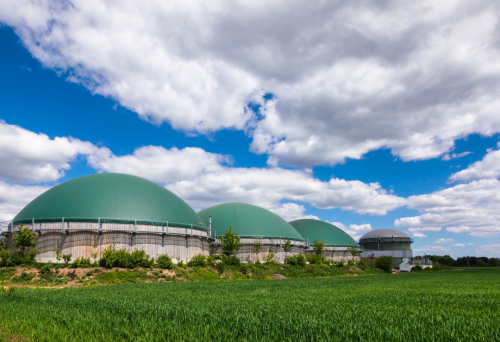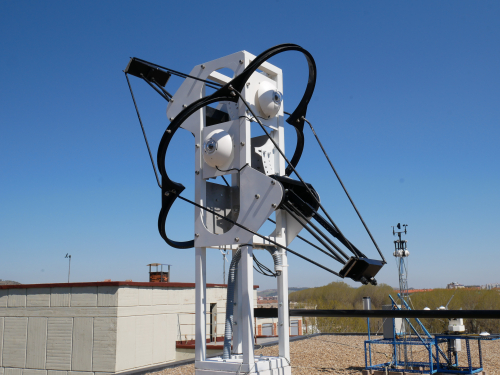The technology is based on bioaugmentation which consists of adding specialized microorganisms to biological systems to improve performances. The bioaugmentation in AD is done via a specific microbiome enriched in a unique Cloacimonetes organism which boost the AD process robustness and efficiency. Our microbial technology acts by quickly and efficiently consuming propionate and other VFAs present in the anaerobic reactors allowing to restart methane production (Figure 1).
Background:Anaerobic digestion (AD) is complex as it relies on different groups of microbes, interacting each other and with specific ecological requirements. The methanogenesis stage of AD is considered as one of the most critical stages, as methanogens are strictly anaerobic and pH sensitive. Indeed, while acidogens are best adapted to low pH (5-6), methanogens activity is inhibited with pH below 6.8 leading to an accumulation of volatile fatty acids (VFAs) and decrease of the pH in the digester. This process failure, named acidosis, is common and biogas plant operators seek solutions to avoid the problem or quickly recover the methane (CH4) production yield and limit revenue losses.
Benefits:
One of the main advantages of our solution is that the mix of microbial strains composing the microbiome coevolved together under the same anaerobic conditions, meaning they cooperate. No similar products are currently available on the market or were developed.
Our technology provides a rapid, reliable, sustainable and cost-efficient method to prevent or recover acidosis. The current state-of-the-art for the recovery of failing anaerobic digester from acidosis is:
- Replacing the biomass with a new inoculum. This solution is easy and efficient but requires the disposal of large amount of acid digestate that cannot be used as fertilizer. Moreover, it does not prevent the risk of new acidosis as it is often due to operating condition or feedstock composition.
- Chemical treatment. Adding alkaline agent such as quick lime (CaO) for example, to the acidified reactor temporarily increases the pH to neutral. Consequently, the methanogens will slowly consume acetic acids and restart the methane production. However, this solution can be costly and does not eliminate the cause related to the acidosis. Moreover, the large supplementation of chemical to the reactor can have an inhibition effect on the methanogens as well as preventing its use as fertilizer.
Applications:
Our developed technology for bioaugmentation is used for anaerobic reactor suffering from acidosis and enables to restart the methane production. There are around 19 000 anaerobic digestion plants across Europe (European Biogas Association, 2019) that can potentially be affected by acidosis
Estimates of the energy production by biogas in Europe plan an important increase by 2030 (between 10 000 and 20 000 kilo tonne of oil equivalent, depending on the scenarios). Thus, the need of solutions for a more efficient and resilient AD process towards perturbation will be essential in the coming years, as confirmed by market studies.
Tests carried out in anaerobic reactors of 100L working capacity show a propionate concentration above 5000 mg.kg-1 of sludge (pH <5), and a produced biogas containing less than 30% of CH4 (Figure 2B and 2C).
Opportunity:
- Collaboration for further demonstration of the commercial potential of our technology as an additive agent for a commercial anaerobic reactor in use in order to restart the process after an acidosis.
- Partnership for further exploration of the cost-benefit ratio, long-lasting effect and adaptability of our technology to current biogas plant design and the use of different waste streams.
IP Status:
The technology is protected by a priority application, filed by LIST the 27th of December 2016 at Luxembourg and extended internationally.
The ownership of the technology is vested 100% to List.
According to our knowledge LIST has the complete freedom to operate with the invention.
The invention involved the use of biological material that has been deposited.
Desired business relationship
Technology development
Other : Licensing


